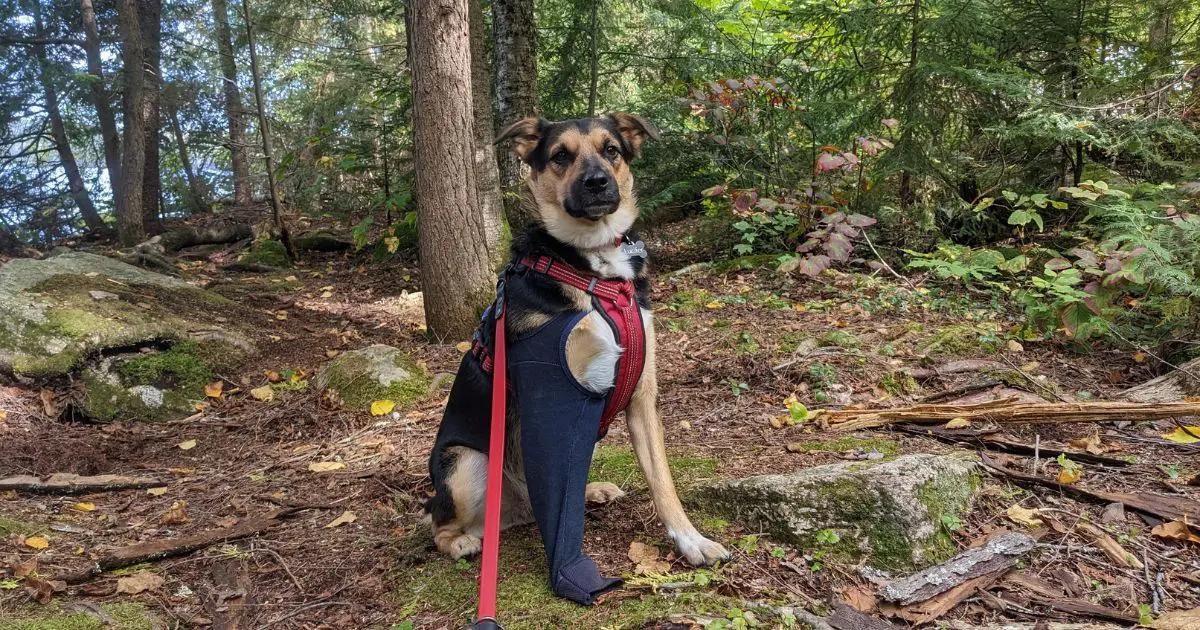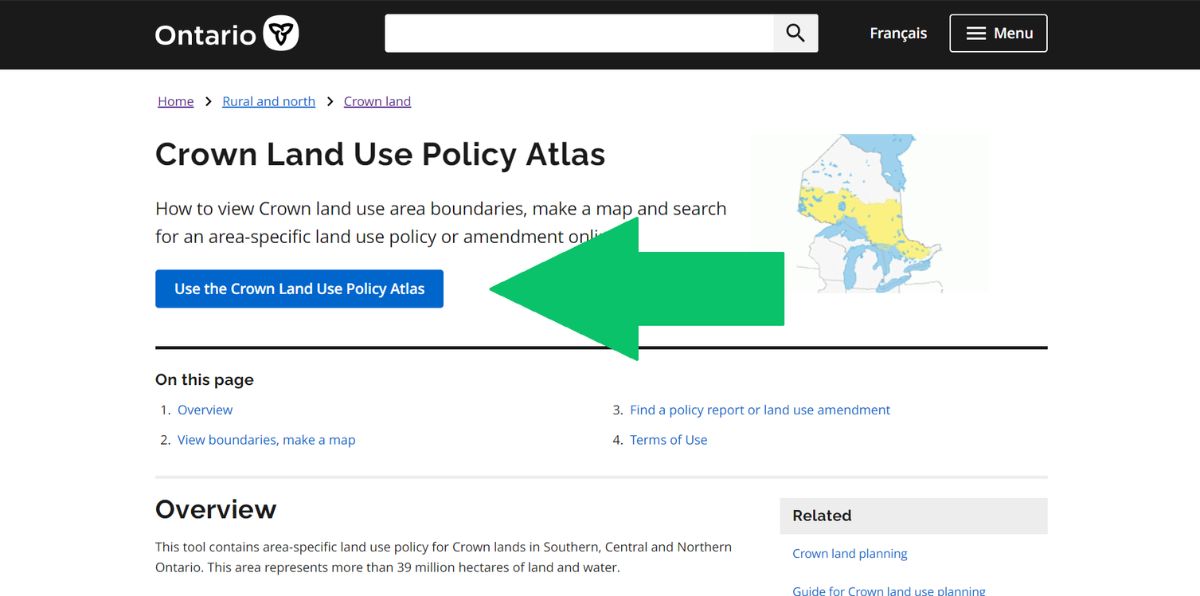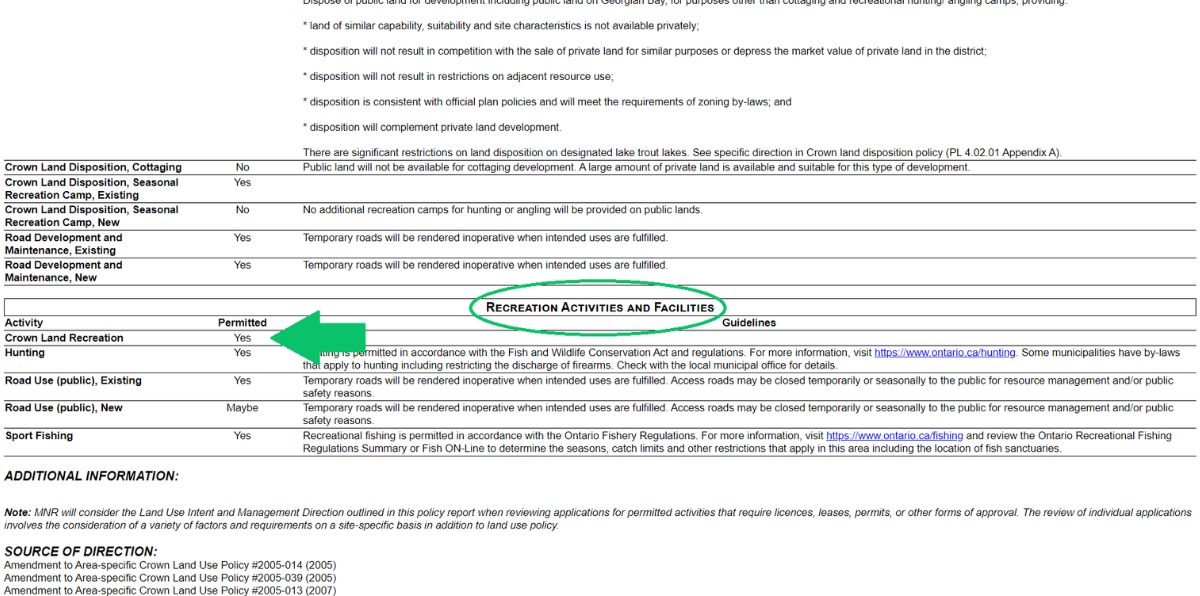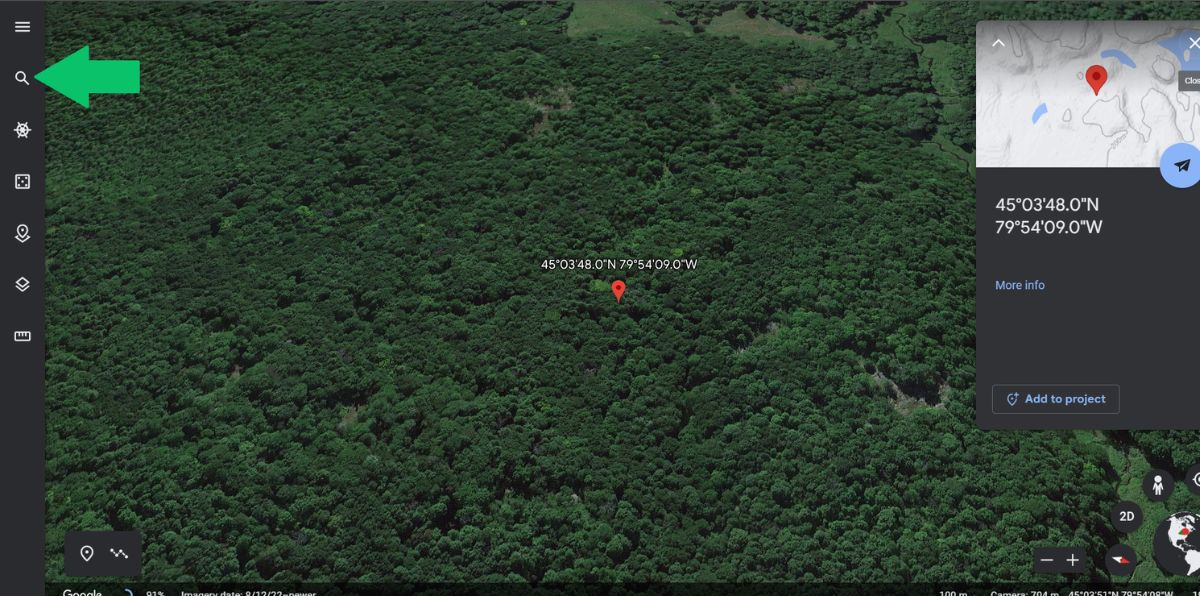How to Find Free Camping with the Crown Land Atlas
As we’ve previously discussed here on The Kas Pack, there are many different styles of camping to accommodate outdoor travellers of all types.
This ranges from luxurious glamping setups to more rustic adventures in the backcountry.
Like many outdoor travel lovers, we enjoy every one of these experiences depending on how we’re feeling, the time of year, and which pet we’re travelling with.
One opportunity that we have been exploring a lot more recently is the wide availability of Crown land camping locations in Northern Ontario. Of course, this comes with one challenge – learning how to read the Crown Land Atlas.
In this post, we’re going to look at what Crown land camping involves, who this style of camping is best suited for, the rules of Crown land camping with pets, and how to find your next destination for Crown land camping in Ontario.

What Is Crown Land?
The term Crown Land is used to identify land owned and managed by the federal or provincial governments. Here in Ontario, this land is governed by the Ministry of Natural Resources and Forestry (MNRF), and it accounts for 87% of the province.
These areas are used for a wide variety of different purposes, including:
- Research
- Mineral Exploration and Development
- Commercial Forestry
- Commercial Fishing
- Environmental Management and Protection
- Recreation (Camping, Fishing, Hiking)
Is it Legal to Camp on Crown Land in Ontario?
Yes, it is legal for Canadian residents to camp on Crown land free of charge. This is restricted, however, to zones that have been designated for camping and recreational use.
Non-residents can also camp on Crown land. However, they may need to purchase a camping permit.
One important restriction to note is that you can only stay on any one site for up to 21 days in a calendar year. This means if you plan on camping for a period longer than that, you will need to move locations at least once.
What is the Difference Between Camping in a Provincial Park and Camping on Crown Land in Ontario?
If you have never camped on Crown land before, you’re not alone. Many experienced campers have never explored camping outside of Parks Canada, Ontario Parks, private campgrounds, and conservation areas.
Unlike camping in Ontario Parks, Crown land locations have no facilities, staff, or infrastructure.
This means there will be no bathrooms, showers, garbage bins/garbage collection, bear boxes, park stores, or other maintained amenities.
You will need to account for this by considering how you will meet all your needs and packing your gear accordingly. If you are camping in a trailer with bathroom facilities, keep in mind that there will be no fill station or dump station.
Along with packing all the gear you will need for your stay, you must be prepared to take everything with you when you go.
All campers must follow the seven principles of Leave No Trace:
- Plan ahead and prepare
- Travel and camp on durable surfaces
- Dispose of waste properly
- Leave what you find
- Minimize campfire impacts
- Respect wildlife
- Be considerate of others
Are Pets Allowed on Crown Land?
Yes! There are no restrictions to bringing your pets when camping on Crown land if you are responsible for them. This means applying Leave No Trace principles to your pet as well.
If your pet goes to the bathroom, clean up behind them.
Prioritize respecting the environment. This means not allowing your pet to destroy local vegetation or chase/harm the local wildlife.
Well-trained dogs that can be off-leash safely can do so while on Crown land.
How to Find Crown Land Camping in Ontario
Connect with Other Crown Land Campers
While you likely aren’t going to have much luck Googling “Crown land near me,” you may be able to discover some new locations by connecting with other Crown land campers.
There are several Facebook groups dedicated to recreational activities on Crown land.
However, many experienced campers will safeguard their favourite Crown land locations so that they will remain available for them. For this reason, they may be reluctant to reveal any specific spots.
Use the Crown Land Atlas
The best way to locate areas where you are permitted to camp is to use the Crown Land Atlas. This online interactive map allows you to search Crown land area boundaries and specific land use policies across the province.
Unfortunately, for those that are new to using this tool, the Crown land Ontario map can be challenging to understand. There is A LOT of information available through this interactive map.
To help you, we will break down the steps needed to find Crown land areas where camping is permitted.

Begin by opening the Crown Land Policy Use Atlas through Ontario’s official government website.
At the top of the map, click on the “Map Layers” tab and then the “Legend” box. This will provide you with a breakdown of what all the colours on the map represent.
Areas that are more likely to permit camping include those labelled as Conservation Reserve, Forest Reserve, or General Use Area.

Zoom in on the map to the area of the province that you are considering visiting until you can see the Area ID on the map.

Returning to the tabs at the top of the map, click “Find Information” and then “Policy Reports.” Enter the Area ID into the search box.
Click “Search,” and a results window will open on the map. Locate your area ID in the search results and click the “Get Land Use Information” button.

On the left side (where the search box was previously), you will see a very basic breakdown of the area you have selected. There will be two clickable areas next to the Report label for you to choose from based on your language of choice.

The report that opens will outline which activities are permitted in the area and which are not. Scroll down to find the “Recreation Activities and Facilities” section of the report.
In most areas, camping will fall under “Crown Land Recreation.” However, if there are unique restrictions to camping in the area, they may also break that out as a separate activity in this section.
Pay careful attention to any specific guidelines outlined in the report, as there may be rules or restrictions that you must adhere to.
Other information you may be interested in includes whether you can use existing roads and if other recreational activities are permitted in the area. This may consist of fishing, ATVs, horseback riding, etc.

When you have found an area that you are interested in exploring, right-click on that area of the map to open a small info window. This will include the latitude and longitude of the location.

Copy these values and enter them into a Google Earth search.
This will allow you to see via satellite whether roads in the area allow you to drive to the campsite locations. You may even be able to spot existing campsites that you can use.

Remember, Crown land is “first come, first serve.” For this reason, the best practice is to locate multiple campsites in the area to have options.
Final Thoughts: Crown Land Camping in Ontario
Pet-friendly outdoor travellers that enjoy more rustic adventures will love the many Crown land camping options. However, the biggest challenge of Crown land camping is finding a campsite to enjoy.
The best tool at your disposal is the Crown Land Atlas on the Ontario government website.
On this map, you can identify designated Crown land and search detailed policy use reports outlining whether you are permitted to camp in the area.
Not only are Crown land campsites a great way to reconnect with nature without the crowds that can sometimes be found in established campgrounds, but they are also an area where dogs are permitted to join you off-leash.
But always ensure your dog is ready to go off-leash safely before taking that step.

Have you ever used the Crown Land Atlas to find a campsite? If so, we would love to hear about your pet-friendly Crown land camping experiences!
